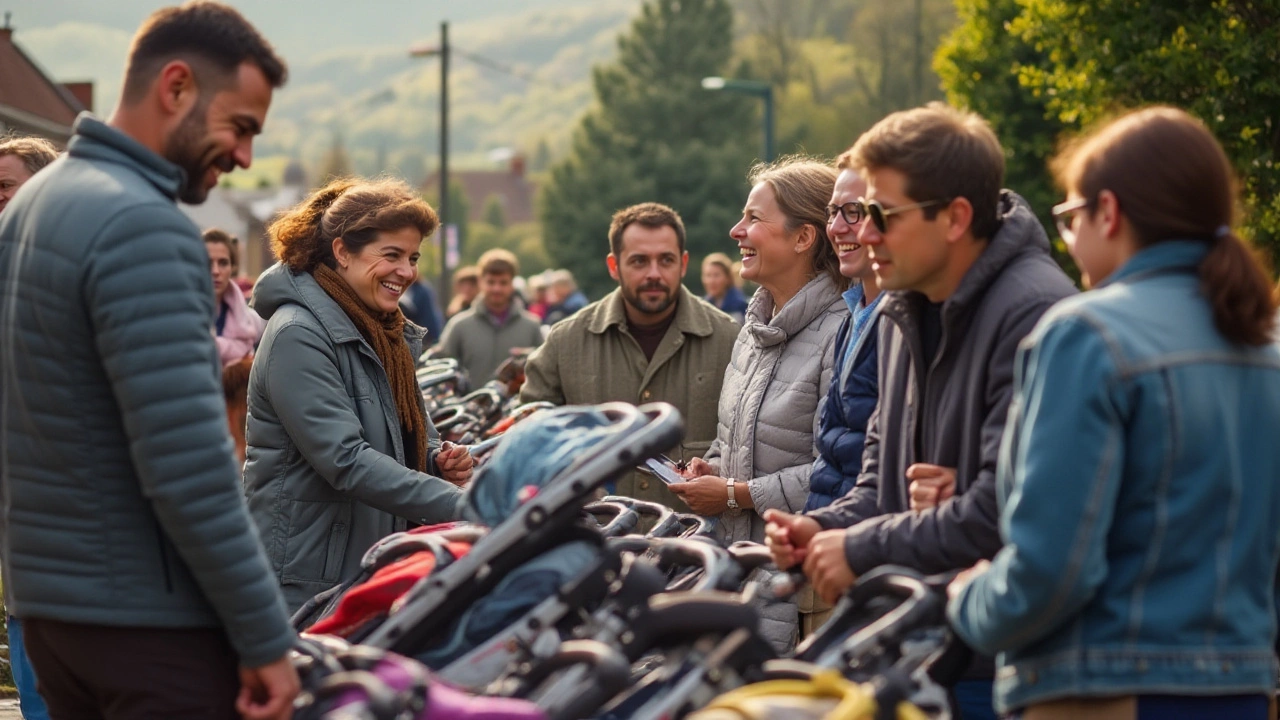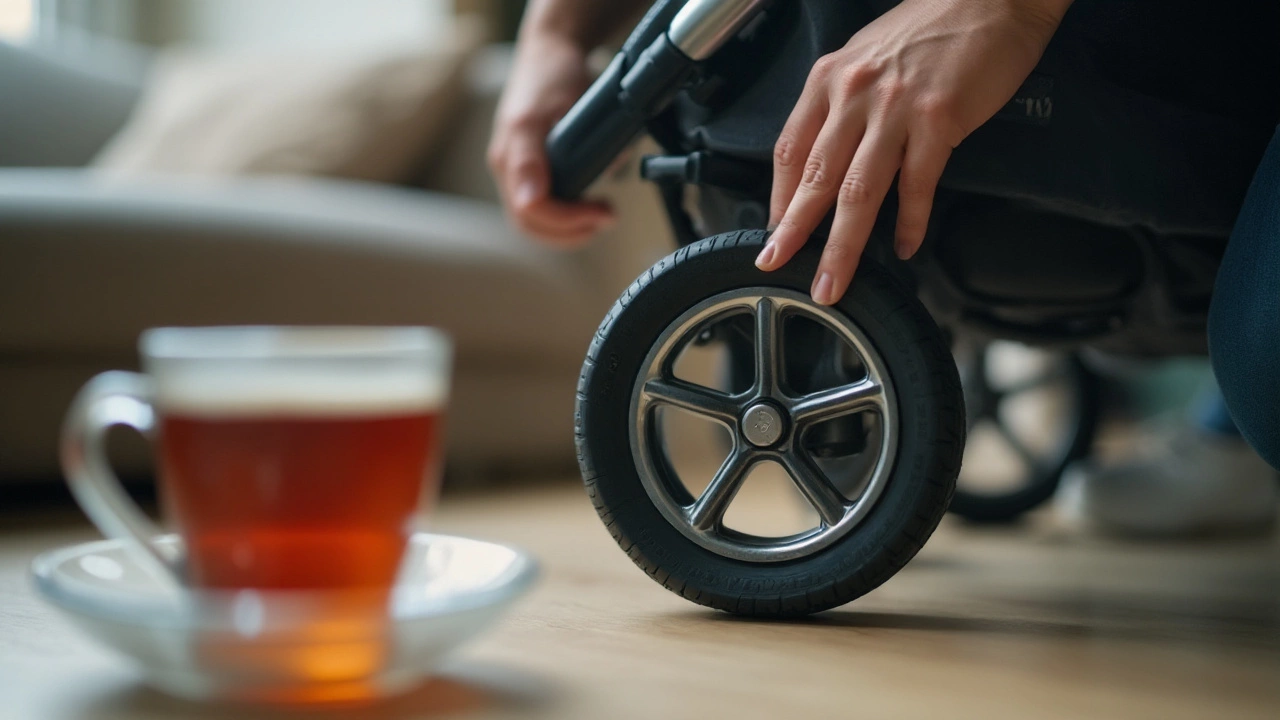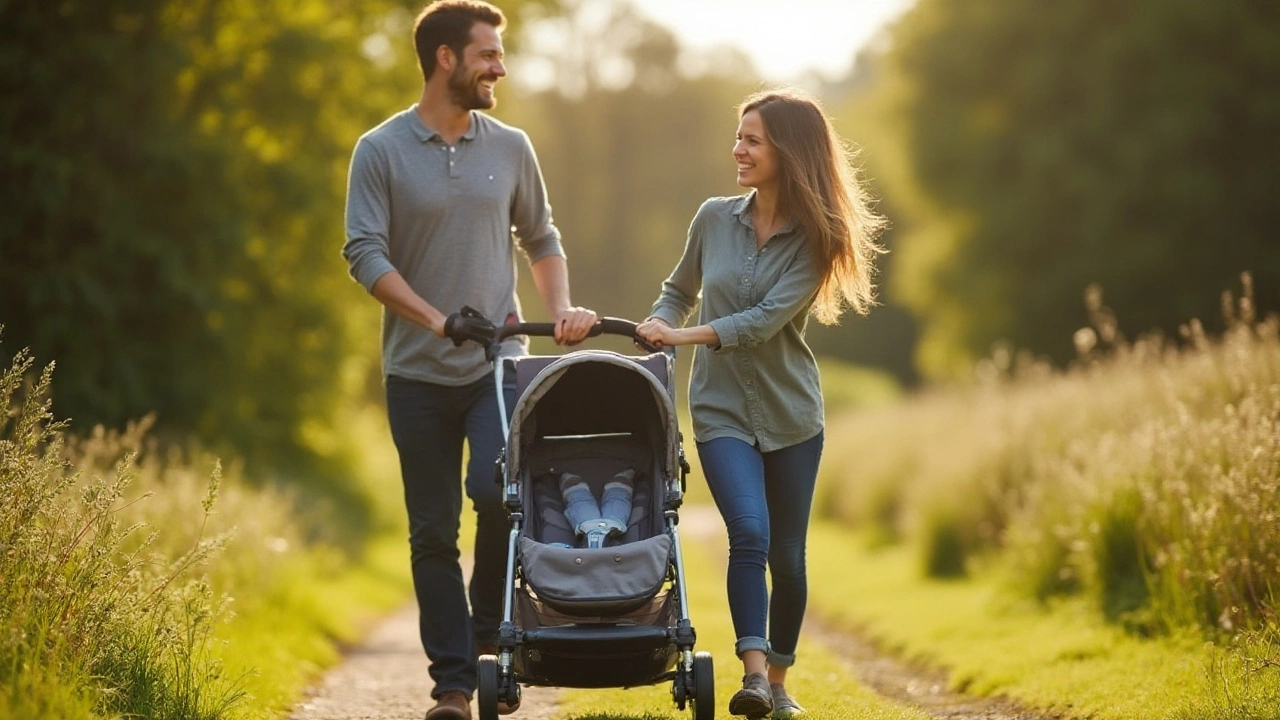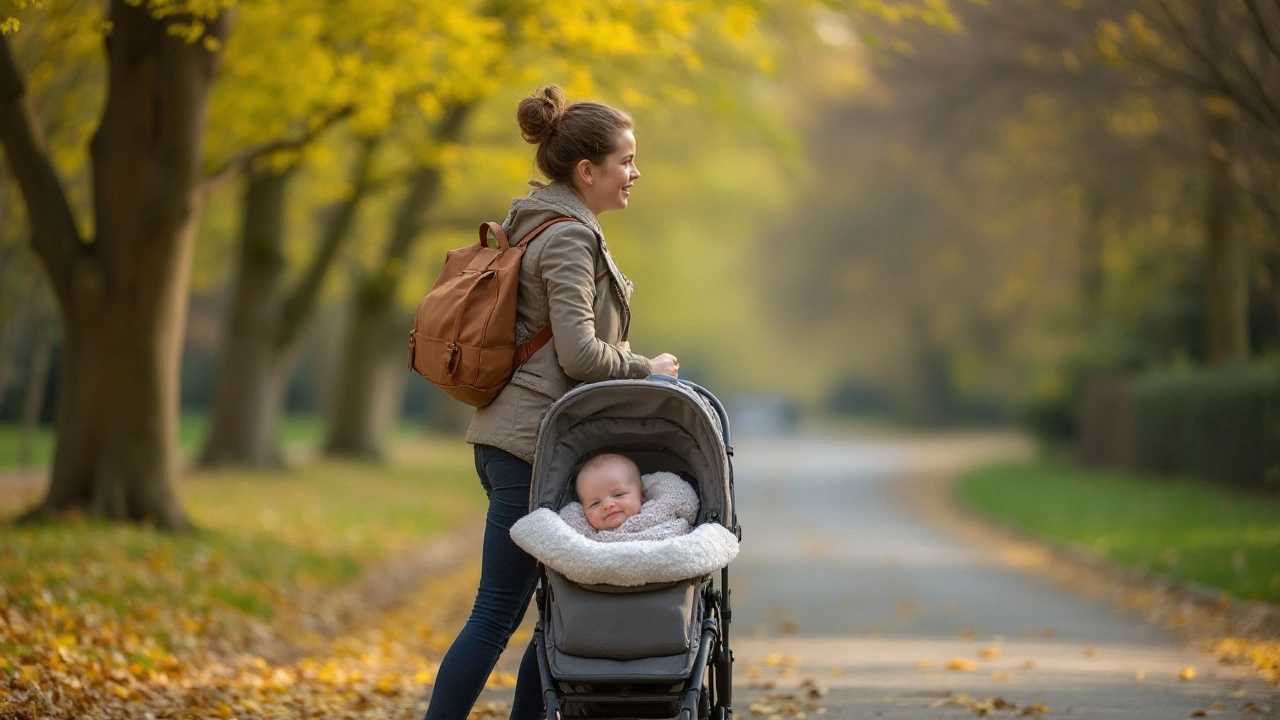Is Buying a Second-Hand Baby Stroller the Right Choice for You?

When you're expecting a little one, it's easy to get caught up in the whirlwind of baby gear. Among the myriad of choices, the question of whether to buy a new or used baby stroller looms large. While a shiny new stroller is tempting, there's much to be said for considering a second-hand option.
In a world where sustainability is becoming more critical, opting for a used stroller not only helps your pocket but also lessens your carbon footprint. But can you really ensure safety and comfort with a pre-loved stroller? The answer lies in knowing what to look for and what to avoid.
- Benefits of Buying Used Strollers
- Potential Drawbacks to Consider
- Essential Safety Checks
- Environmental Impact and Savings
- Tips for Finding Quality Used Strollers
- When to Consider Buying New
Benefits of Buying Used Strollers
Purchasing a used baby stroller offers several advantages that can be quite appealing to new and seasoned parents alike. It's no secret that babies require a lot of gear, and the costs can add up quickly, especially when it comes to big-ticket items like strollers. Opting for a second-hand stroller not only eases this financial burden but also promotes a more sustainable lifestyle, a factor many parents are considering in today's eco-conscious world. By choosing a used stroller, parents can allocate savings to other critical areas of childcare or even indulge in quality experiences with their precious little one, without worrying about breaking the bank.
Beyond the financial positives, there is the environmental aspect to consider. Each year, millions of strollers are manufactured, creating a substantial ecological footprint. By purchasing second-hand, you're helping to reduce demand for new production, which plays a small yet significant part in decreasing waste and conserving resources. It's a choice that aligns with a commitment to responsibility and raising your child with an awareness of environmental issues. For many families, this alignment with values can be just as important as the immediate savings.
"Buying used baby gear, including strollers, is a great way to be eco-friendly and budget-conscious," says Green Child Magazine, a leading organization dedicated to sustainable parenting.
Moreover, second-hand strollers have often stood the test of time, proving their durability and reliability. A stroller that has already carried one or more children can be trusted to continue performing well, inspiring confidence in its longevity. It's an opportunity to harness value and reliability in one go. Parental peace of mind is precious, especially when juggling the many responsibilities that come with a new arrival.
The diversity on offer in the used stroller market is also worth mentioning. From high-end, luxury brands to lesser-known but well-crafted models, parents have a wide array of choices. This variety means that it's often possible to find more features or higher quality within a budget that would only allow for a basic model when buying new. The thrill of finding just the right stroller at a fraction of the cost provides a satisfying sense of accomplishment, akin to a successful treasure hunt.
| Reason | Impact |
|---|---|
| Cost Savings | Up to 60% compared to buying new |
| Environmental Impact | Reduced production demand |
| Durability | Proven longevity through use |
However, it's important to note that not all tantalizing price tags are indicative of a great deal. The heart of successful second-hand shopping lies in being vigilant about product research and thorough checks. Knowing what to look for, such as ensuring the stroller meets current safety standards and inspecting for wear and tear, is key to reaping these benefits. That said, the potential rewards far outweigh the inconveniences, making buying a used stroller a viable and rewarding choice for those who are willing to take a little extra care in their selection.
Potential Drawbacks to Consider
Choosing to buy a used baby stroller brings with it a variety of factors that might not immediately leap to mind when you're delighted by the promise of thrift. The number one concern? Safety. Your baby’s well-being is paramount, and while many used strollers are perfectly safe, some models may have been subject to recalls. Unlike new strollers, second-hand ones don’t come with warranties, leaving you responsible for any necessary repairs or replacements.
As you embark on this journey, expect some signs of wear. Scratches and faded fabric are common, which might not affect functionality but can diminish aesthetic appeal. Stains, stickiness, or lingering odors from previous spills can be harder to overlook, particularly when dealing with sensitive little noses. A deep clean might reclaim some of its former glory, but it's a chore on top of many others for a new parent.
Another aspect often underestimated is the reduction in modern features that a new stroller might boast. Many brands release annual updated models featuring the latest innovations: improved safety harnesses, sturdier build materials, or sleek design tweaks. By opting for a used stroller, you might miss out on these advances, finding yourself with an out-of-date model that's lagging behind its shiny new counterparts.
Moreover, the process of buying a second-hand stroller is more cumbersome than getting a brand new one from a shop. There might be no ongoing customer support or trouble-shooting services for older models. Parts specific to the model could be hard to find if you need replacements. As stroller components tend to wear out over time, this becomes a crucial factor to consider. A savvy parent should weigh these potential drawbacks alongside the financial incentives of a second-hand purchase.
Caring for a baby is more than buying the best that's out there. It's about making informed decisions for their safety, as highlighted by the consumer advocate, Jennifer LaRouche, "A good stroller should be safe and comfortable, whether it's new or used. Parents should carefully inspect any second-hand stroller before settling on what they feel is a bargain."
Longevity could also become an issue if a second-hand stroller has already seen significant use. Determine the stroller’s age and compare it against the expected lifespan of the model. Some materials may degrade faster than others, and wheels especially can be subject to wear and tear that affects performance over time. Investigate how easy it is to find replacement parts should you need them, which will give you peace of mind that it won't quit on you halfway through a busy day.
In conclusion, buying a second-hand stroller requires diligence. Examine closely to ensure it is a worthwhile investment, and bear in mind the potential for hidden flaws that could present challenges unseen at first glance. A new stroller might seem expensive but remember, the peace of mind it offers in terms of reliability and support is worth considering alongside the benefits of saving and sustainability that a used one promises.

Essential Safety Checks
For any parent considering the purchase of a used baby stroller, safety should be at the forefront of decision-making. A second-hand stroller can be a great way to save money and contribute to eco-friendly parenting, but ensuring that it remains safe for your precious passenger is critical. One crucial first step is checking for any recalls by the brand and model. Manufacturers post recall information on their websites, and you can often find up-to-date listings through consumer product safety commissions. Knowing this can help you avoid any models with history of defective parts or safety issues.
The integrity of the frame is another non-negotiable aspect to inspect. Whether metal or plastic, it should not have any cracks, bends, or signs of wear that could compromise its strength. A stroller's frame should also fold and unfold smoothly, without any jerky movements. This smooth folding mechanism is crucial as it prevents the stroller from collapsing unexpectedly while in use. Alongside the frame, the fabric part is also essential. Check for tears, holes, or signs of excessive wear that could harm your baby's comfort or safety.
Check the Harness System
Stroller harnesses need to be fully functional to keep your baby securely strapped in. Most modern strollers come with a five-point harness, which is typically the safest option, securing at the shoulders, waist, and between the legs. With a second-hand stroller, it is vital to check these harnesses for any signs of fraying or weakness, as well as to confirm that the buckles click firmly into place and release quickly when needed. A faulty harness system could jeopardize your child's safety and comfort during walks or runs.
The stroller's brakes, too, require a thorough inspection. Test them on different gradients to ensure they engage and disengage smoothly and completely. Brakes should be easy to access and operate, locking the stroller securely even on uneven terrain. Sometimes, debris such as small stones or leaves can block the brakes, so take a moment to clean and test them before setting out on any adventure with your little one.
"Even a seemingly minor issue, like a misaligned wheel, can turn a daily stroll into a dangerous situation," says child safety expert Dr. Linda Connor.
Wheels and Suspension Systems
Wheels bear the brunt of any stroller's journey, so their condition is of the utmost importance. Check for signs of wear and tear, such as uneven tread, which can suggest uneven weight distribution or rough handling. It's also wise to ensure that all wheels are firmly attached and spin freely without wobbling. If possible, take the stroller for a test run — this step can highlight any unwanted gear issues or alignment problems that are not always apparent when the stroller is stationary. Additionally, the suspension system, especially in models designed for all-terrain use, should offer a smooth ride to avoid jarring movements that could disturb or harm an infant.
| Maintenance Aspect | Frequency Check |
|---|---|
| Frames and Joints | Monthly |
| Brake System | Before Every Use |
| Harness Integrity | Monthly |
Examining a stroller with a meticulous eye can safeguard not just your investment but more importantly, the safety and well-being of your child. Giving attention to these physical components while also monitoring any regulatory alerts for stroller safety can deliver not just peace of mind, but a rewarding experience as your child explores the world.
Environmental Impact and Savings
Opting for a used baby stroller instead of purchasing a brand new one isn’t just a win for your budget; it’s a step towards a greener lifestyle. Think about all the resources that go into manufacturing a new stroller—energy, raw materials, and labor. Every small choice to buy second-hand contributes to a significant decrease in demand for new products, thus reducing the overall environmental footprint associated with the production processes. The carbon emissions saved in bypassing the creation and transportation of new goods also play a crucial role in mitigating climate change impacts, making this choice an eco-smart move.
Moreover, the financial aspect of purchasing a second-hand stroller can considerably impact family budgets, especially for new parents balancing numerous expenses. Buying pre-loved can often save you more than fifty percent of the original retail price. This financial relief can be redirected towards other essentials needed for a growing child, such as diapers, clothing, or perhaps even saved for future educational needs. Many high-quality second-hand strollers come with minimal wear and tear, occasionally even appearing as if new, owing to their durable design.
It's vital to be cautious, though. Ensuring the stroller hasn’t been recalled and that it's still in good working condition is crucial for safety. As noted by the Environmental Action Group, “Reusing existing products slows down the cycle of waste and negates the need for constant production, serving as a practical solution to our sustainability issues.”
Buying used is an active decision supporting reduced landfill waste and fewer toxic emissions from manufacturing plants. It's not just economizing; it's a choice advocating for a healthier planet, encouraging thoughtful consumption.
Reaping the benefits of second-hand goods, parents can also instill the values of resource conservation and sustainable living in their children from an early age. This small but significant decision becomes a teaching moment, showcasing how every action bends towards protecting our fragile planet. Plus, by investing the savings, these choices can pave the way for a stable financial future, allowing families to focus on long-term security without compromising on their child's needs today.
| New Stroller Average Cost | Used Stroller Average Cost | Potential Savings |
|---|---|---|
| $300 - $800 | $100 - $400 | 50% - 70% |

Tips for Finding Quality Used Strollers
Embarking on the journey to find a quality **used baby stroller** can be both exciting and a bit daunting. The key is to begin with research and have a clear picture of what you need. When investigating strollers, consider the terrain you most frequently encounter; for city living, a compact model might suit better, whereas, for suburban or rural parents, a sturdier, all-terrain stroller could be advantageous. It's a good idea to make a checklist of desired features, such as an adjustable handlebar, ample storage space, or a reversible seat. Remember, just because it's second-hand doesn't mean you have to compromise on functionality or comfort.
The next step is to explore reputable marketplaces. Online platforms such as Facebook Marketplace, Craigslist, and eBay often have a selection of strollers in different conditions. When browsing these sites, pay close attention to seller ratings and reviews to ensure a positive transaction experience. In addition, local resale shops or consignment sales specializing in baby gear can also offer excellent deals with the added advantage of physically inspecting the stroller before purchasing.
Assessing the condition of the stroller is crucial. Look for signs of wear and tear on the fabric, wheels, and frame. Check for any recalls or safety alerts related to the brand or model you are considering. A quick online search can provide this information. It's essential to confirm that all parts are intact and functioning correctly from brakes to buckles to steering mechanisms. A tag or a sticker on the stroller should display a model number and a manufacture date, vital details that can be used to verify its safety and compliance with current standards.
Don't hesitate to ask the seller questions. Knowing the stroller's history, such as how long it was used and the conditions it was exposed to, can give insight into its durability. Inquire if it’s been involved in any accidents, as impacts may weaken the structure. Many manufacturers’ websites offer downloadable user manuals that include maintenance tips and care instructions, which can be really useful if those are not included with the purchase.
According to a 2023 article by Parenting Magazine, “The lifespan of most strollers extends well beyond the initial years they’re used by a family, making second-hand purchases both economical and environmentally savvy.”
Finally, let’s talk about the cleaning and conditioning of your soon-to-be **second-hand stroller**. Before your little one rides in it, give it a thorough cleaning. Most stroller seats are removable and machine-washable, but double-check the label for care instructions to avoid any premature wear. Don’t overlook the frame, wheels, and handles when sanitizing. Using a gentle cleanser, wipe these areas down to ensure your child has a clean start.
When to Consider Buying New
While the allure of a used baby stroller can be strong, there are times when new may be the better choice. Safety is paramount, and if the stroller has any recalls or it's impossible to verify its history, buying new ensures peace of mind. A new stroller comes with a warranty and up-to-date safety features, so if something goes wrong, assistance is just a call away. The latest models often incorporate technological advancements, like improved suspension or easier folding mechanisms, which can make daily life simpler.
Another factor to consider is honestly assessing future needs. If you're planning on having more children relatively soon, investing in a new stroller with robust durability might save costs over time. New models are also often more adaptable, offering modular systems that can transition from infant carriages to toddler strollers, making them a longer-term investment.
Eco-friendly parenting often guides potential stroller buyers towards sustainable practices. However, it's worth noting that many manufacturers are now producing strollers with eco-conscious materials and processes that may not be available in older models. This could be a pivotal factor if environmental impact is a close concern. Moreover, new strollers come with the opportunity for personalization, ensuring your baby's ride reflects exactly what you need in terms of style and functionality.
"Safety standards evolve, and ensuring the highest degree of protection for your child might sometimes mean opting for the latest model," says Jane Adams, a child safety expert with the National Child Care Association.
Additionally, for those whose lifestyle involves a great deal of public transport or urban navigation, modern strollers are often designed with these specific challenges in mind, prioritizing lightweight materials without compromising on durability. While saving money is always appealing, sometimes the higher upfront cost can result in long-term convenience and satisfaction. Remember, a stroller isn't just a tool but an extension of how your family moves around together.
In some situations, community and cultural factors play a role in deciding whether to go new or used. Cultural significance or family traditions might persuade new parents to partake in a cherished practice of selecting a brand-new stroller that gets passed down. Newness symbolizes welcoming your baby into a fresh journey of life. Brands with international reputations might offer features that ensure better ease and comfort regardless of the terrain. Whether hiking trails or city sidewalks are your terrain, having the right tools makes all the difference.

